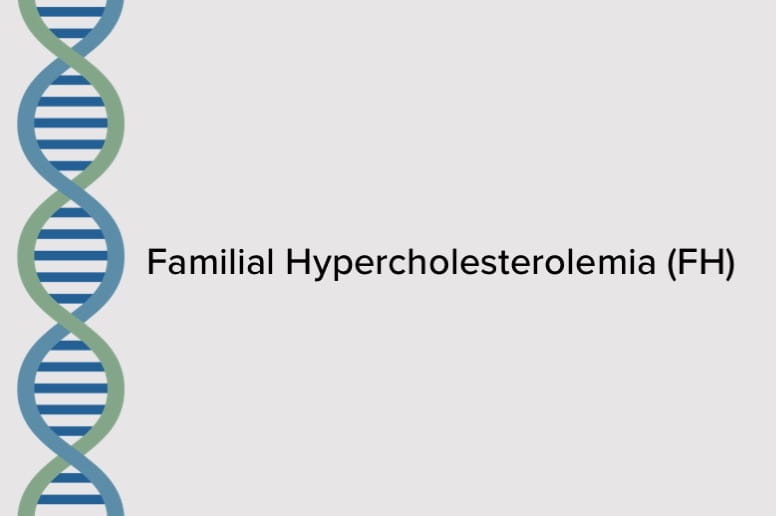
Detecting gene changes for better health
MyCode conditions
MyCode provides genetic analysis reports to participating patients who have a gene change that may increase their risk of developing one or more of over 25 medical conditions.
With the care of your medical team, many of these conditions can be prevented or detected at an early, more treatable stage. Learn more about these conditions:
All conditions that can be detected through MyCode:
Cardiovascular risk
Arrhythmogenic right ventricular cardiomyopathy (ARVC): A disease that affects the heart muscle and increases risk of cardiac arrest.
Learn about ARVC
Inherited cardiomyopathies: Diseases of the heart muscle with potentially dangerous complications.
Catecholaminergic polymorphic ventricular tachycardia: An abnormal heart rhythm (or arrhythmia).
Familial hypercholesterolemia (FH): Can increase risk of early heart attacks and strokes.
Learn about FH
Familial thoracic aortic aneurysms and dissections: The aorta can become weakened and stretched, causing sudden tearing of the layers in the aorta wall.
Inherited arrhythmias: An irregular heartbeat, which can increase risk for cardiac arrest.
Cancer risk
Familial adenomatous polyposis: Increases risk of early colon cancer.
Hereditary breast and ovarian cancer (HBOC): Increases risk of early breast, ovarian, prostate and other cancers.
Learn about HBOC
Hereditary pheochromocytomas and paragangliomas: Tumors that may release extra hormones and, rarely, become cancerous.
Li-Fraumeni syndrome: Increases risk of early breast, soft tissue, brain, adrenal and other cancers.
Lynch syndrome: Increases risk of early colon, uterine and other cancers
Learn about lynch syndrome
Multiple endocrine neoplasia type 1: Tumors that may release extra hormones and, rarely, become cancerous.
Multiple endocrine neoplasia type 2: Increases risk of early thyroid cancer.
MUTYH-associated polyposis: Increases risk of colon cancer.
Neurofibromatosis, type 2: Non-cancerous tumors in the nervous system.
Peutz-Jeghers syndrome: Increases risk of early breast, colon, pancreatic and other cancers.
PALB2-related cancer risk: early onset breast, pancreatic and ovarian cancers.
Retinoblastoma: Increases risk of early eye cancer.
Von Hippel-Lindau syndrome: Increases risk of early kidney cancer and benign tumors of brain, eye, pancreas and adrenal gland.
Wilms tumor and related syndromes: A cancerous kidney tumor.
Misc. phenotype
Biotinidase deficiency: A buildup of too much of a B vitamin that could cause neurological problems.
Fabry disease: A disease that prevents the body from making a certain enzyme. This can lead to damage of blood vessels in the skin and cells of the kidneys, heart and nervous system.
Hereditary hemochromatosis: A condition that can lead to too much iron in the body, which can cause issues with the liver, including cirrhosis, liver failure and liver cancer, diabetes, heart disease and changes in skin color.
Hereditary hemorrhagic telangiectasia: Improperly formed blood vessels that can cause a risk of bleeding or poor blood flow to body parts.
Hereditary transthyretin amyloidosis: Cardiac and neurological disease due to the buildup of amyloid plaques throughout the body.
Juvenile polyposis: Non-cancerous intestinal polyps, which increases the risk of developing certain types of cancer, including colon cancer.
Loeys-Dietz syndrome: May cause aortic aneurysms.
Malignant hyperthermia: A potentially life-threatening condition typically triggered by exposure to certain drugs used for general anesthesia.
Marfan syndrome: A connective tissue disease that may cause heart, eye and skeletal issues.
Maturity onset diabetes of the young (MODY): Diabetes in the teens or early adulthood.
Ornithine transcarbamylase deficiency: A condition that causes ammonia to accumulate in the blood, leading to symptoms such as vomiting, lethargy and coma.
Pompe disease: A buildup of glycogen that could cause muscle problems throughout the body.
PTEN hamartoma tumor syndrome: Increases risk of early breast, thyroid, uterine and other cancers, including intellectual disability in some cases.
Retinopathy: A disease causing blindness and low vision.
Tuberous sclerosis: Multiple types of non-cancerous tumors.
Vascular Ehlers-Danlos syndrome: A disease that affects the connective tissues, including arteries and muscles, that may increase the risk for health complications such as ruptured arteries.
Wilson disease: A condition that can lead to too much copper in the body, especially in the liver and brain. This can cause issues in the liver and nervous system, such as clumsiness, problems walking, slurred speech, impaired thinking and mental health issues like depression, anxiety and mood swings.
"I feel like I have my life back."




